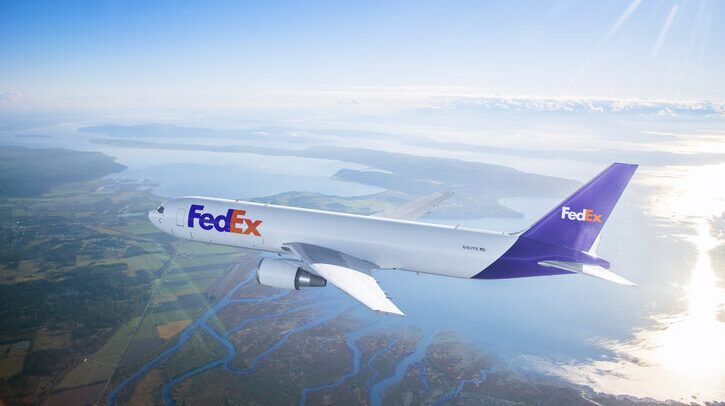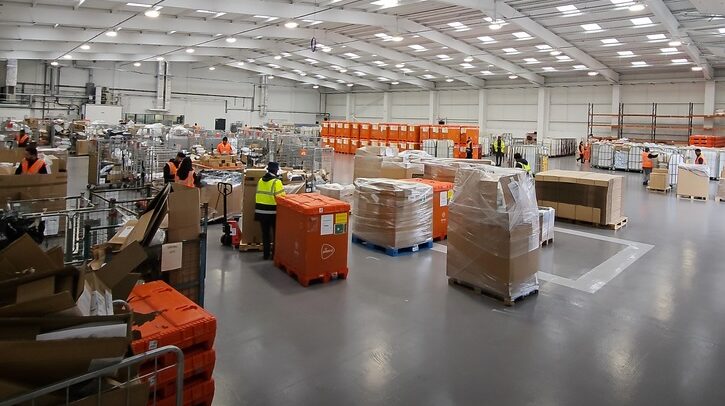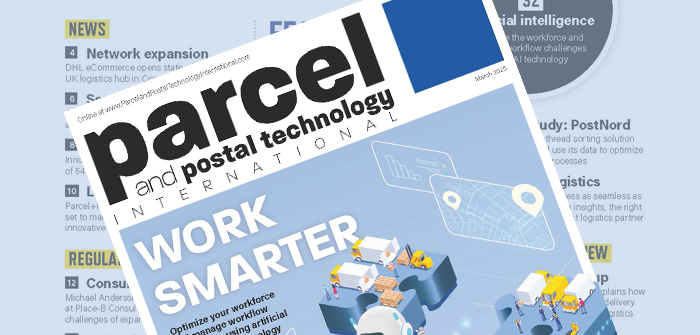Helen Norman explores how complex customs rules and regulations are affecting cross-border e-commerce, and the role technology can play in smoothing the process
Navigating the complicated world of cross-border e-commerce can be extremely challenging, especially given the fact that import fees and customs regulations change from country to country on a regular basis. The challenges, however, are not putting off retailers from expanding beyond their domestic borders.
“The global e-commerce market continues to grow, doubling from €1.7tn in 2018 to €3.6tn [US$3.7tn] in 2023, and is forecast to reach €5.5tn [US$5.7tn] by 2028, according to Euromonitor estimates,” says Luke Lloyd, head of markets at the International Post Corporation (IPC). “Across this period, cross-border has accounted for approximately 10-12% of this total figure and so cross-border parcel volumes have also rapidly increased.”
FedEx estimates that cross-border sales are expected to grow twice as quickly as the wider e-commerce sector, with international sales predicted to be worth US$5.6tn by 2030. “In recent years, we’ve seen a surge in cross-border e-commerce, with consumers and businesses increasingly shopping and selling across international borders,” comments Mark Ruddock, vice president of clearance operations at FedEx Europe.
With such growth, more and more retailers need support to figure out the different taxes, tariffs and customs duties required to ship into specific countries. “The main hurdle when it comes to cross-border e-commerce is the sheer complexity of managing different regulations across various countries,” asserts Adnan Zaheer, CEO of iCustoms, an AI-driven trade compliance management platform. “Each market has its own rules, tax structures and duty thresholds, and these are constantly changing. The lack of standardization between markets means that even a small error, such as a misclassified product or an incorrect document, can bring the whole process to a halt.”
Changing regulations
Recent regulations that have affected cross-border e-commerce include ICS2 for surface transportation (see ICS2 extends to rail and road at the end of this article); the Safety and Security declarations (also known as the Entry Summary Declarations – ENS), which were introduced on January 31, 2025; and the post-Brexit Windsor Framework. “A further challenge is that regulations can rapidly change for political reasons – as emphasized by multiple recent announcements from the US,” adds IPC’s Lloyd.
Lloyd is referencing the anticipated reduction/removal of the de minimis rule for US imports, which could have a big impact on delivery costs and parcel flows. De minimis allows shipments valued under US$800 to enter the US free of duty and taxes. In 2013, 100 million packages entered the US using this rule. Last year, this figure had grown to over 1.36 billion, or 3.8 million packages a day.
The Trump administration announced in February that it would immediately eliminate the exemption for low-value shipments arriving from China. However, within days, US ports of entry were overwhelmed with a backlog of packages as the Customs and Border Protection (CBP) service was unprepared to deal with the extra processes required. The administration has now announced it will create a process to eventually eliminate the exemption for China.

“In August 2024, Turkey changed its de minimis regulations to protect Turkish companies from Chinese rivals such as Temu and Shein,” Lloyd says. These changes included reducing the de minimis from €150 (US$157.50) to €30 (US$31.50) and significantly increasing duties and taxes. “This had a rapid effect in instantly reducing consumer e-commerce imports,” Lloyd adds.
Other changes afoot include the European Commission’s Customs 2030 initiative, the potential removal of the €150 (US$157.50) de minimis limit in the EU, and further US-imposed tariff changes. “With the USA, we already see some changes in tax rates that are likely to propagate to other countries as reciprocity measures,” comments David Avsec, Postal Technology Centre (PTC) account relationships coordinator at the Universal Postal Union (UPU). “It is likely that 2025 will be very dynamic, and new regulations may be announced in the coming months. The postal network needs very agile IT systems to adapt quickly.”
“The increasingly changing international economic environment demands continuous adaptation of solutions,” agrees Kelly van der Weg, managing director of Spring GDS. “Retailers and sellers should be able to focus on what they do best, and shouldn’t be burdened by the ever-changing rules and regulations. As a cross-border seller, with so many suppliers to potentially work with, it is hard to find a partner that can support shipping needs on a multilateral level.”
The Customs Declaration System
One system that can help posts tackle the myriad customs challenges is the UPU’s Customs Declaration System (CDS) – a web-based solution that simplifies electronic customs data exchange to expedite international shipments, Avsec explains. “CDS is the UPU’s answer to growing demands for electronic advance data (EAD) for cross-border postal items. It helps with data collection, and the software validates the data entries then prepares and sends the declarations to the destination, according to UPU standards.”
In February, CDS was enhanced thanks to the UPU’s new partnerships with cross-border technology firms Zonos and Hurricane Commerce. The latest release of CDS, CDS 2024 SP1, includes APIs to Zonos and Hurricane Commerce software. Thanks to these new integrations, CDS has been enriched with new lookup functionalities for EAD compliance data, including HS codes (product classification numbers), information on prohibited and restricted items and denied parties verification.
According to UPU’s Avsec, the new functionalities included in CDS 2024 SP1 are important additions, but there is more to come: “We do have plans to empower a postal delivered duty paid (PDDP) solution, thanks to the same APIs and with the addition of a landed costs calculation. Specifications are currently being built, and delivery is on the roadmap for later in 2025.”
IPC’s PDDP service
The IPC is also supporting postal operators with cross-border e-commerce. Its PDDP service enables consumers to pay taxes and duties at the point of online purchase, thus meeting the needs of consumers, e-retailers and authorities.
“PDDP provides posts and e-sellers with a comprehensive solution that offers full visibility for customers when ordering online,” Lloyd explains. “All associated costs, including taxes, duties and surcharges, are displayed up front, creating a transparent and hassle-free experience for customers. Shipping times are also reduced, as PDDP items are granted ‘green lane’ status at the destination, ensuring a seamless customs experience. Moreover, PDDP is fully compliant with regulatory changes, allowing e-sellers to transform potential challenges into competitive advantages.”
Lloyd believes that solutions like this, which provide a level of automation for e-sellers and posts, are the key to successful cross-border e-commerce. “While the level of items being eligible for customs fees has increased, it is not feasible for authorities to hire customs officials at the same rate,” he says. “Therefore, automation of customs procedures is an absolute necessity. This is on the side of e-retailers and delivery providers sharing accurate information about the item from the moment it leaves the warehouse, to authorities using machines to read customs information in an automated manner rather than manually.”
Simplifying cross-border complexity
Spring GDS aims to take away the complexity of cross-border shipping with tailored solutions for e-commerce. “Our solutions seamlessly integrate with multiple platforms and marketplaces in under 24 hours,” explains van der Weg. “We have all the established integration setups such as API, EDI and self-built options.”
Van der Weg shares that as customs requirements continue to evolve, it will be vital for businesses to work with suppliers that can adapt to those changes. “Having one party to support you with a simple integration layer, which provides security on compliance and can offer you one entry to all your shipping destinations, with a mix of service levels and solutions, is scarce,” he asserts. “Spring GDS creates bespoke solutions, diving into the supply chain of sellers, understanding the optimal cutoff point and adapting accordingly with a personal approach.”

According to van der Weg, Spring GDS focuses on consumer transparency, shipper compliance and simplification, with tax and duties calculated upfront at the retailer’s website checkout. “Our solutions are paperless and data flows are corrected before the actual shipping takes place,” he says. “This way of working provides the smoothest distribution and faster transit times. From a seller perspective, you have visibility on quality, you can manage your tracking and label generation and, as all data flows are connected, as a seller you are legally and fiscally compliant, shipping across (EU) borders with Spring GDS.”
The company is part of the PostNL Group, offering access to global networks. “It provides choice and optimization for sellers on speed, price or visibility. It also secures contingency, as Spring GDS can always instantly provide alternative backup networks,” van der Weg adds.
The role of AI
According to iCustoms’ Zaheer, technology is really stepping up to the plate when it comes to tackling the challenges of cross-border e-commerce and meeting new regulations.
“AI can be a real game-changer for logistics operators for handling the ever-growing demands around customs and taxes,” he argues. “It takes the heavy lifting off their shoulders by automating tasks such as customs declarations, tax calculations and goods classification.”
In February, iCustoms launched its latest solution, iAgent, which uses AI agents to lighten the load for logistics companies by making decisions and handling tasks with little human input. By uploading customs documents, iAgent automates time-consuming and repetitive tasks such as declaration completion, providing businesses with a solution to efficiently navigate the complexities and high volumes of global trade.
“In addition to iAgent, we have IDP (Intelligent Declaration Processing), which uses AI to fully automate the customs declaration process; iClassification, which classifies HS codes with 99% accuracy in just three minutes; and iENS, which simplifies the process of submitting Entry Summary Declarations for shipments entering or leaving the UK and EU,” Zaheer reports. “Leveraging AI means logistics firms can stay compliant, reduce delays and focus on what really matters: delivering excellent service to their customers.”
A global presence
For FedEx’s Ruddock, digital technologies can help reduce customs bureaucracy and trade friction. “Trade relies on processes that are simple, streamlined and interoperable between different systems. This is where plans for a new EU customs data hub could change the game. Having a single, centralized data portal would strengthen customs processes, reduce fraud and give traders just one IT environment in which to register and clear goods. Everyone benefits from a system that is simpler, faster and more reliable,” he explains.
FedEx has developed a comprehensive cross-border e-commerce offering, which, according to Ruddock, includes a range of “practical tools, technologies and services” to help businesses navigate the complexities of global trade regulations and compliance. The firm’s International Connect Plus enables sellers to ship their e-commerce products to more than 190 countries and territories in as little as two days.
“It is a central part of our role to unlock the potential of cross-border e-commerce for customers by helping them navigate increasingly complex regulatory and customs processes,” continues Ruddock. “We handle 480,000 daily clearance transactions in Europe for our customers, and we serve more than 220 countries and territories where we have the local presence and shipping expertise to help companies meet the expectations of cross-border customers. We are also investing in new technologies and partnerships to support customers with customs and duties processes.”
Capitalizing on cross-border
Ruddock believes that the ever-changing cross-border landscape and the increasingly complex regulatory environment should not prevent businesses from taking advantage of international growth opportunities.
“Cross-border e-commerce growth is still expected to outpace domestic e-commerce, and in saturated domestic markets it can be a valuable growth strategy for retailers,” he asserts. “Businesses do not have to handle the challenges of cross-border e-commerce business alone. They can work with trusted partners like FedEx.”
The IPC’s Lloyd, meanwhile, highlights how logistics operators and e-retailers need to keep in mind consumer requirements when developing solutions for import fees and regulations. “Based on the IPC Cross-Border Shopper Survey 2024, we see that consumers still continue to expect cross-border delivery to be free – as the cost-of-living crisis continues to impact consumer willingness to pay,” he says. “Consumers will continue to expect free delivery to be built into the cost of the item, even if customs fees and operational costs continue to increase in the future.”
Summing up, iCustoms’ Zaheer advises that logistics operators fully embrace automation and digital tools “from the get-go” to help them improve their cross-border e-commerce offering. “Customs regulations and taxes can be tricky to keep up with, especially as new rules pop up regularly, so having the right technology in place is essential,” he concludes.
ICS2 extends to rail and road
On April 1, 2025, the European Union’s Import Control System 2 (ICS2) will be extended to rail and road, in addition to the existing air, maritime and inland waterway requirements. ICS2 aims to enhance the safety and security of goods sent to or through the EU by introducing a standardized, pre-arrival customs process for all modes of transportation.
By mandating the submission of accurate and complete Entry Summary Declaration (ENS) data prior to arrival, the ICS2 enables customs authorities to better assess the risks associated with incoming goods, thereby improving the EU’s ability to prevent and combat customs offenses and ultimately ensure a safer and more secure trade environment.
The ICS2 obligation also concerns postal and express carriers that transport goods using these modes of transportation, as well as other parties, such as logistics providers. To comply with the ICS2 requirements, affected businesses will be required to ensure they collect accurate and complete data from their clients, update their IT systems and operational processes, and provide adequate training to their staff.
Goods might be stopped at EU borders and might not be cleared by customs authorities if traders do not meet the ICS2 requirements.
CTT Portugal targets cross-border e-commerce expansion
 CTT – Correios de Portugal is undergoing a major transition from a traditional mail operator to a leading logistics group for e-commerce across the Iberian Peninsula and beyond. This transition is being accelerated through innovative solutions and strategic partnerships, according to executive board member João Sousa.
CTT – Correios de Portugal is undergoing a major transition from a traditional mail operator to a leading logistics group for e-commerce across the Iberian Peninsula and beyond. This transition is being accelerated through innovative solutions and strategic partnerships, according to executive board member João Sousa.
Sousa highlights a recent partnership between the group’s national and international express delivery service, CTT Expresso, and DHL eCommerce, which will see the “two companies combine highly efficient parcel delivery networks for B2B and B2C e-commerce, including out-of-home deliveries, with a daily capacity of over one million shipments within the Iberian Peninsula”.
CTT is also improving its e-commerce offering through strategic acquisitions. In late 2024, for example, the group announced the acquisition of Compañia Auxiliar al Cargo Express (Cacesa), a Spanish company specializing in the international e-commerce customs sector.
“The acquisition of Cacesa makes it possible for us to strengthen our competencies in the customs area, meeting the demands of the growing cross-border e-commerce
business. Cacesa’s customs clearance platform is highly automated and based on a proprietary software process that allows for cost-effective and scalable growth. It is present in 15 countries, with Spain, Italy, Belgium and Poland as its main markets,” comments Sousa.
As these partnerships and acquisitions show, CTT is confident that there is still plenty of room for e-commerce growth in the Iberian market. “For this purpose, CTT will continue to diversify its customer base, regardless of geography, product type or company size,” adds Sousa. “We believe we have all the conditions to drive the growth of e-commerce
in the Iberian Peninsula, whether through our delivery network or by supporting companies in their digitalization process, with services that help them create and strengthen their digital presence, from creating an online shop to managing their warehouses.”
To read the full interview with CTT’s João Sousa, click here.
This article was originally published in the March 2025 issue of Parcel and Postal Technology International



